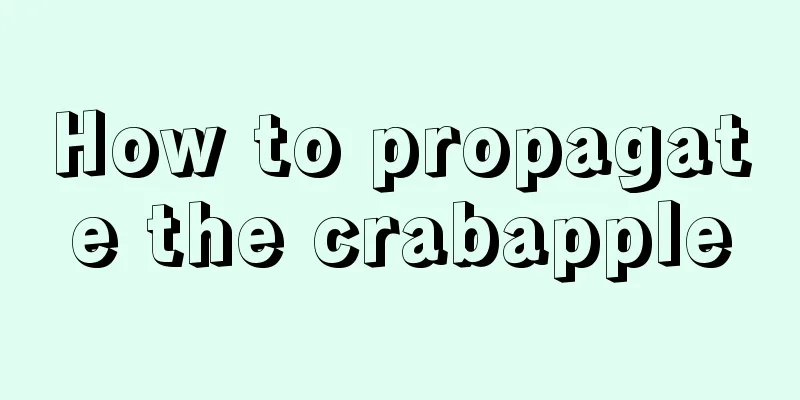How to propagate the crabapple

Preparation before graftingThe rootstock is chosen from seedlings propagated by sowing, and the time for grafting is chosen in spring and autumn. Grafting processBranch grafting can be done by cutting grafting, cleft grafting, and approach grafting. The cleft grafting method mainly introduced here is the most primitive and most commonly used grafting method. Step 1: RootstockCut or saw the selected rootstock at the grafting site. The criteria for selecting rootstocks are that the inner surface is smooth, knot-free, and has straight texture from top to bottom for a certain length. After the rootstock is prepared, the next step is to use a cleaver to split the rootstock vertically along the center. Be careful not to use too much or too little force. You can place the cleaver on the chopping position you have chosen in advance, then hold the cleaver steady with your hand, gently tap the back of the knife, and use the force of the tapping to embed the cleaver into the rootstock. However, when tapping, it is best not to shake the hand holding the cleaver. Wait until the cleaver is 2 to 5 cm deep. Step 2: ScionThe scion should be cut into a length of 5 to 10 cm, preferably with 2 to 3 buds. The base is cut into a wedge shape, and the most perfect thing is to have two symmetrical facets. Step 3: Joining Use a cleaver to pry open the split of the rootstock and insert the scion into the rootstock. Remember to move gently to avoid damaging the inside. The thick side of the scion should face outwards and the thin side should face inwards. Align the cambium of the rootstock and the cambium of the scion. Tips for joint alignmentWhen the rootstock is thicker than the scion, the cortex of the rootstock will generally be thicker than that of the scion. When combining them, care should be taken to make the outer surface of the scion slightly closer to the inside than that of the rootstock so that the cambium of the two can match. In addition, you can also use the xylem as a standard, align the xylem surfaces of the two, and the cambium will naturally align. The diameter of the rootstock is much larger than that of the scion. A scion is grafted on each side of the rootstock and combined according to the previous method. After joining, the grafted rootstock and scion are tied or sealed with wax. Be sure to wrap all the splits and cuts tightly, and do not touch the scion during operation. Step 4: SurvivalAbout 10 days after grafting, if the remaining buds are still fresh and one corner of the petiole has fallen off, it means that the grafting was successful and the binding can be removed after a few days. When the seedlings grow to 80CM to 100CM in height, they are basically fully grown. After that, only dense branches, inward branches, overlapping branches need to be pruned to maintain a round crown. |
<<: When does the goldfish plant bloom?
Recommend
Is the Chinese giant thorn suitable for indoor cultivation?
1. Can it be raised indoors? The answer is that i...
What are the cultivation methods and precautions of Baolian Denghua
How to grow the lotus The lotus likes a warm and ...
Where is the planting condition and climate requirement for tangerine suitable for planting?
Tangerine planting conditions The growth, develop...
Can dahlias be grown in pots?
Can dahlias be grown in pots? Dahlias can be pott...
How to grow Buddha belly bamboo
1. Soil To cultivate Buddha belly bamboo, you nee...
Common types of pine bonsai
Jungle style (for Podocarpus): Its shape is just ...
Why does trumpet creeper not bloom?
Reason 1: Seedlings The trumpet creepers in many ...
Blueberry Tree Growing Conditions and Characteristics
Blueberry tree growth conditions Blueberry trees ...
How to clean the leaves of succulent plants that are dirty after spraying (how to clean the traces of succulent plants after spraying)
To avoid drug residues in succulents, pay attenti...
What is the best season to plant henna?
Henna Planting Season and Time Generally speaking...
Where is the best place to plant black plum trees?
Where the plum trees are planted Black plum is a ...
How to grow Dieffenbachia in winter
1. Move indoors When winter comes, you should mov...
How to plant potatoes
Potatoes , scientifically known as Solanum tubero...
How to propagate and raise cycads
1. How to breed 1. Seed propagation: It is unlike...
Common diseases and pests of dancing grass and their control
Dancing grass pests Pests Dancing grass has fewer...









